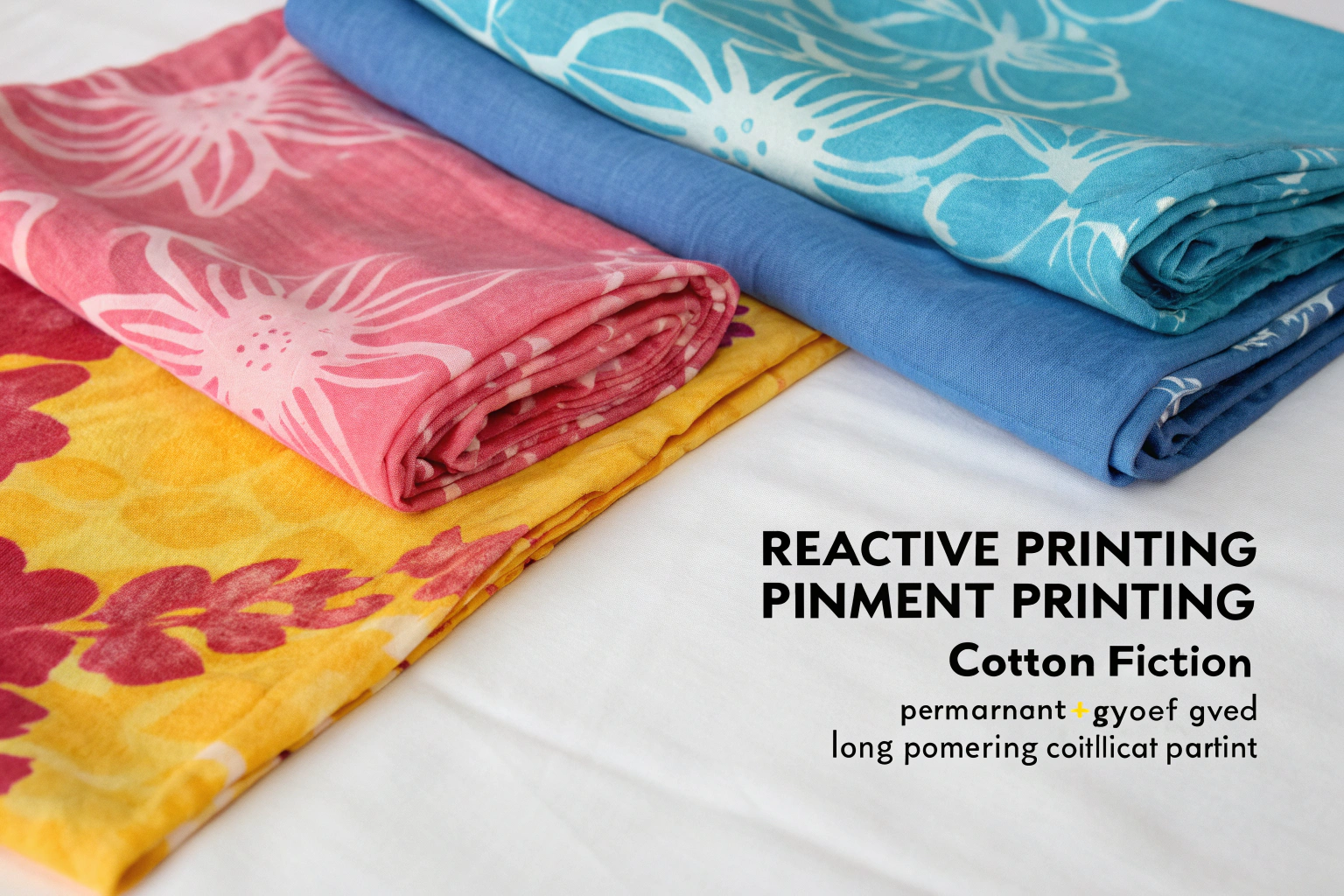When you're sourcing cotton fabrics for your fashion line, the printing method can make or break your product's quality, cost, and market appeal. I've spent over two decades in the textile hub of Keqiao, China, guiding global brands through these exact choices. The debate between reactive and pigment printing is a common pain point I help clients like you navigate daily. Understanding this difference is crucial for controlling costs, ensuring quality, and meeting your customers' expectations.
Reactive printing and pigment printing are two distinct methods for applying color and patterns to cotton fabric. Reactive printing uses dyes that form a permanent chemical bond with cotton fibers, resulting in vibrant, long-lasting colors. Pigment printing uses insoluble pigments adhered to the fabric surface with a polymer binder, offering a simpler process and good color fastness but a different hand feel. Your choice impacts everything from the fabric's softness and durability to your production timeline and compliance with international eco-standards.
Let's dive into the core differences between these two popular methods. This knowledge will empower you to make informed decisions, avoid costly mistakes, and select the perfect printing technique for your next clothing collection.
What is reactive printing on cotton?
Reactive printing is a favorite for high-end apparel due to its exceptional color quality. The process involves dyes that contain a reactive group. This group forms a covalent chemical bond with the hydroxyl groups in the cellulose of cotton fibers. This bond means the dye becomes a part of the fiber itself, rather than just sitting on top of it.
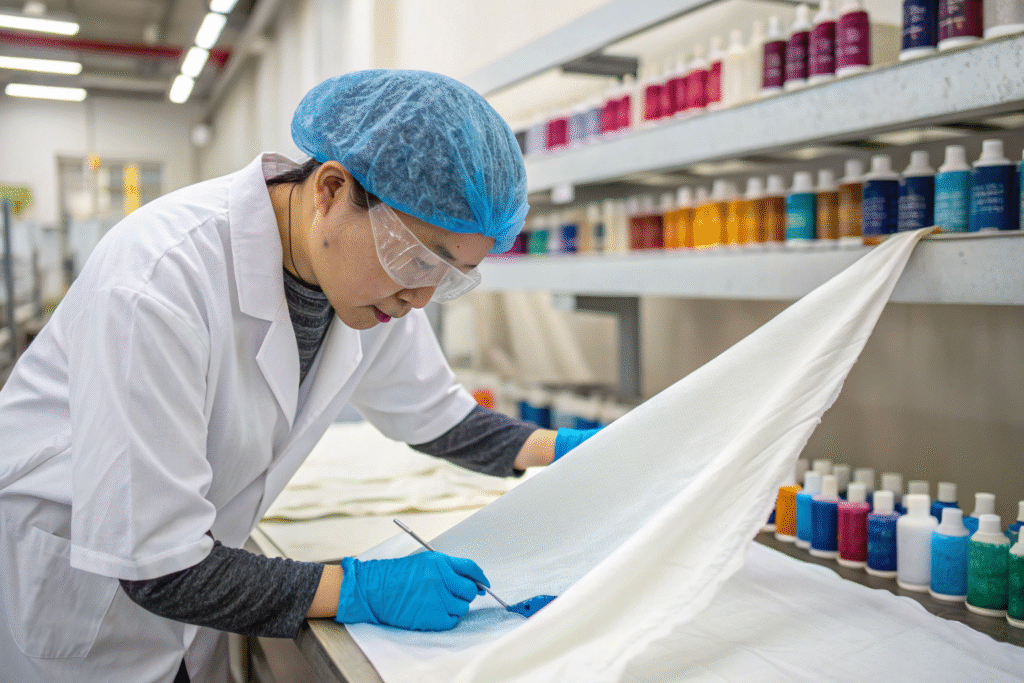
How does the reactive dyeing process work?
The reactive dyeing process is complex but yields superior results. It starts with preparing the cotton fabric through scouring and bleaching to ensure it is clean and absorbent. The fabric is then padded with the reactive dye solution. A key step is fixation, where the fabric is steamed. This steaming provides the heat and moisture necessary for the chemical reaction between the dye and the fiber to occur. After this, the fabric must be thoroughly washed to remove any unfixed dye, hydrolyzed dye, and chemicals. This washing step is critical to achieve the final soft hand feel and excellent wash-fastness reactive printing is known for. Our CNAS-certified lab meticulously controls each stage, ensuring every meter of fabric meets strict international standards like those from SGS for quality and safety.
Why choose reactive printing for fashion?
You should choose reactive printing when your priority is a luxuriously soft hand feel and brilliant, long-lasting colors. Because the dye penetrates and bonds with the fiber, the color resists fading from washing and friction. This makes it ideal for high-fashion garments, children's wear, and premium home textiles where color vibrancy and fabric softness are key selling points. Furthermore, with the rise of eco-conscious fashion, many modern reactive dyes are developed to meet EU eco-certifications, aligning with the demand for sustainable production. The main trade-offs are a longer production time, higher water consumption due to the washing process, and generally higher cost compared to pigment printing.
What is pigment printing on cotton?
Pigment printing is the most widely used printing method in the world, and for good reason. Unlike reactive dyes, pigments are not soluble in water and do not bond with the cotton fiber. Instead, they are finely ground color particles suspended in a thick binder. When cured with heat, this binder forms a tough, polymeric film that encases the pigment and glues it to the surface of the fabric.
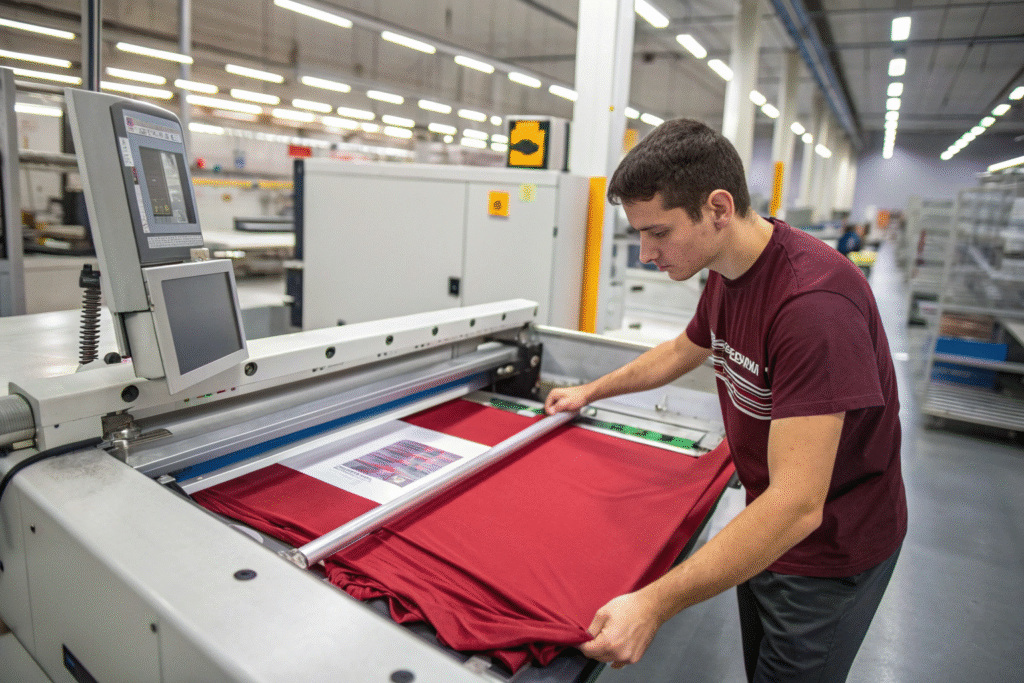
How is pigment printing applied?
The application of pigment printing is straightforward and efficient. The pigment paste, a mix of color, binder, and thickener, is applied directly to the fabric using screens or digital printers. The fabric then passes through a drying and curing oven. The heat from this oven triggers the cross-linking of the polymer binder, creating a durable film that fixes the pigment onto the fabric's surface. A major advantage is that no post-washing is required. This significantly reduces water usage and production time, making it an agile and cost-effective solution. This streamlined process aligns perfectly with our capability for quick bulk delivery, supported by our local dyeing-weaving-finishing partnerships.
When is pigment printing the best option?
Pigment printing is your best option for cost-effective production runs and designs that require high opacity on dark fabrics. It excels in producing sharp, well-defined prints. The process is also more environmentally friendly in terms of water conservation, as it eliminates the extensive washing-off stage. However, the polymer binder can sit on the fabric, which may result in a stiffer hand feel, especially on large print areas. The durability is good, but the printed area can be prone to cracking over time if a low-quality binder is used. It is perfectly suited for fast-fashion items, graphic tees, and applications where a softer hand feel is not the primary concern.
Reactive vs pigment printing: which is better?
The question isn't which method is universally better, but which is better for your specific product and business needs. Each technique offers a distinct set of advantages and trade-offs that directly impact your fabric's quality, cost, and application.
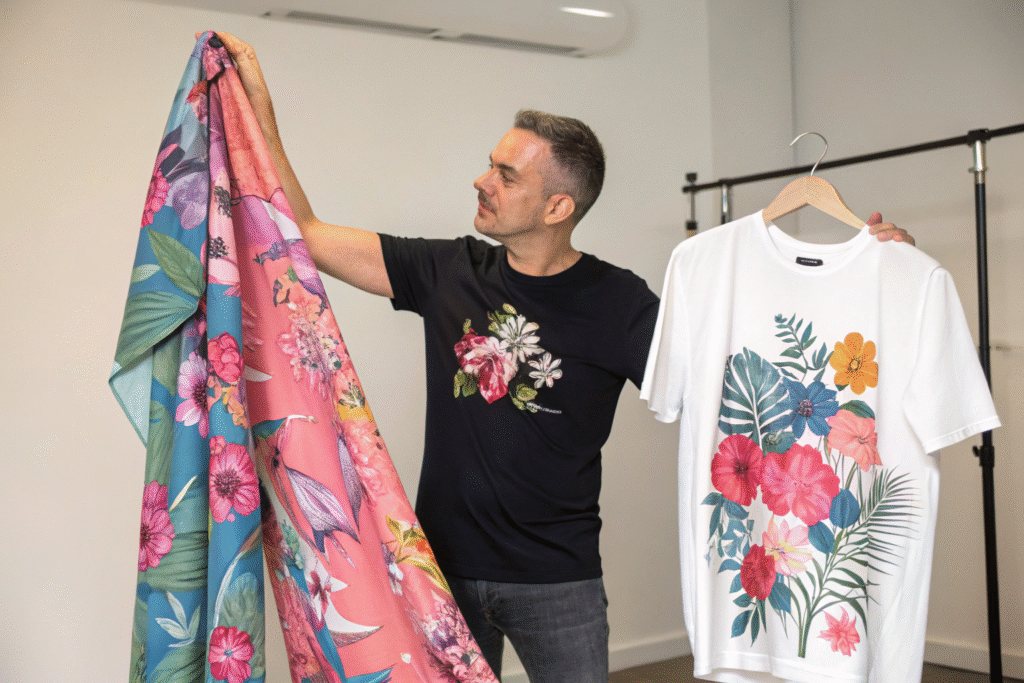
How do cost and production time compare?
When evaluating cost and speed, pigment printing generally holds the advantage. The process is simpler, requires fewer steps, and uses less water and energy since no steaming or washing is needed. This leads to a faster turnaround and a lower price point. Reactive printing involves a more complex process with multiple stages, including costly post-washing, which increases both production time and final cost. For businesses looking to optimize supply chain agility, especially for large orders, this efficiency is a key factor. Our agile R&D and supply chain can execute 48-hour sample development and quick bulk delivery for both methods, but the inherent speed of pigment printing is a significant benefit for time-sensitive projects.
How does quality and durability differ?
The quality and durability differ significantly. Here's a quick comparison:
| Feature | Reactive Printing | Pigment Printing |
|---|---|---|
| Hand Feel | Exceptionally soft | Can be stiff or rubbery |
| Color Vibrancy | Deep, vibrant, rich colors | Good, but can be less brilliant |
| Wash Fastness | Excellent, resists fading | Good, but may crack over time |
| Fabric Breathability | Unaffected, as dye is part of fiber | Can be reduced, as binder forms a surface film |
| Environmental Impact | Higher water consumption | Lower water consumption |
Reactive printing wins on softness and color penetration, making it feel more premium. Pigment printing offers good durability for everyday wear, but the surface film can compromise the natural softness of cotton.
How to choose between reactive and pigment printing?
Making the final choice depends on a clear understanding of your brand's priorities, target market, and the specific garment you are producing. There is no one-size-fits-all answer.
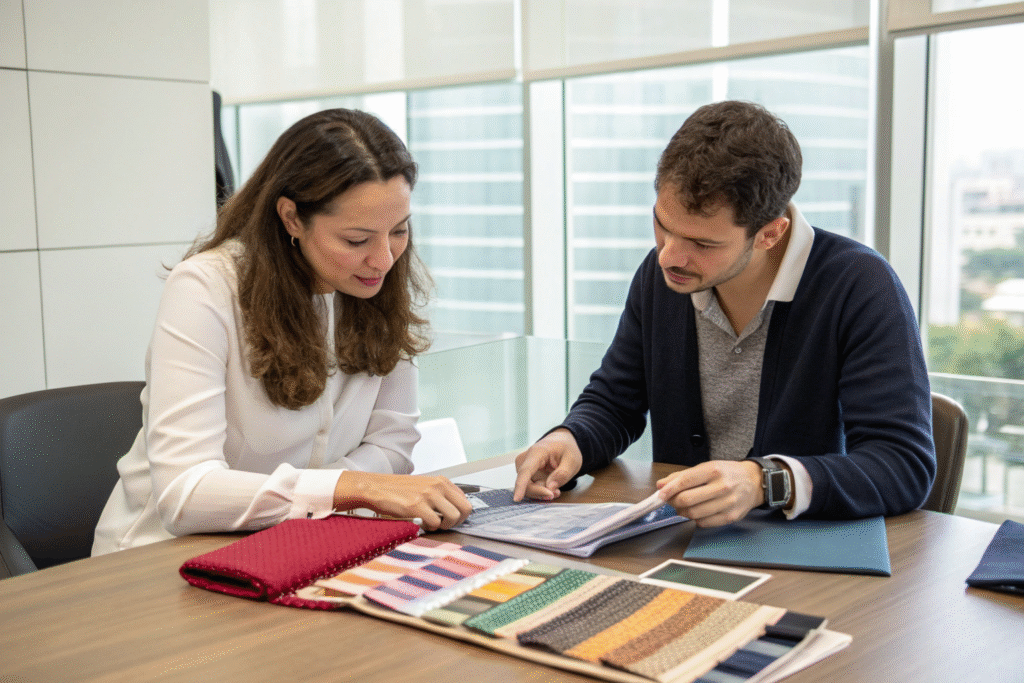
What factors should guide your fabric printing choice?
Your decision should be guided by several key factors. First, consider the target market and price point. Is your garment for a luxury brand or a value-oriented fast-fashion line? Second, evaluate the design requirements. Does your design need a soft, vintage wash look (reactive) or a sharp, opaque graphic (pigment)? Third, assess the importance of sustainability in your marketing. While pigment printing uses less water, the chemicals in binders can be a concern. Reactive printing can use more water but with advanced, eco-friendly dyes. Finally, always, always request physical lab dips and strike-offs before placing a bulk order. Feeling the fabric and testing the print is irreplaceable.
Why is partnering with an expert supplier crucial?
Partnering with an expert supplier is crucial because we bring two decades of experience in executing both methods to the highest standards. We help you navigate these complex choices without compromising your vision or budget. Our dedicated QC team and CNAS-accredited testing center ensure that whether you choose reactive or pigment, the final product meets your specifications for colorfastness, shrinkage, and composition. We provide the integrated support—from yarn sourcing to lab dips and tech packs—that top-tier brands like ZARA and H&M rely on. This end-to-end service guarantees you get the right print for the right product, every time.
Conclusion
Choosing between reactive and pigment printing for your cotton fabric is a strategic decision that directly affects the quality, cost, and marketability of your final product. Reactive printing offers unparalleled softness and color brilliance through a chemical bond with the fiber, ideal for premium apparel. Pigment printing provides a cost-effective, efficient solution with sharp graphics, perfect for high-volume, fashion-forward items. By understanding the core differences in their processes, costs, and final results, you can make an informed choice that aligns with your brand's identity and your customers' expectations.
We at Fumao Textiles are more than just a supplier; we are your partner in fabric innovation. With our comprehensive in-house capabilities—from weaving and dyeing to printing and coating—we can expertly guide you and produce either printing method to your exact requirements. Let us help you bring your next clothing line to life with the perfect print. For a consultation and to start your sampling process, please contact our Business Director, Elaine, at elaine@fumaoclothing.com. We are ready to co-create value and deliver the quality your brand deserves.

